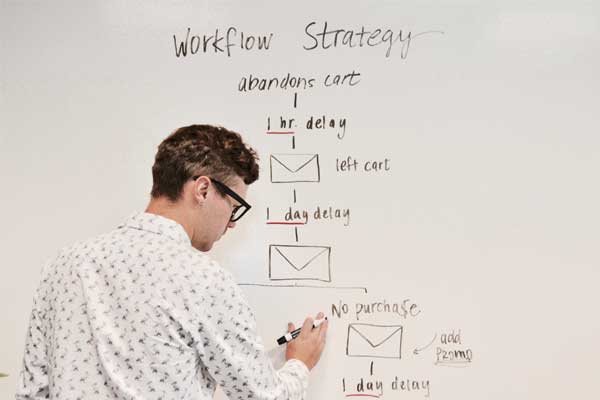Email Marketing Best Practices: Maximizing Your ROI - Unlock the Secrets Today!
Introduction: The Power of Email Marketing
It’s no secret that email marketing remains a powerful tool for businesses of all sizes. Done right, it can help you engage with your audience, drive traffic to your website, and ultimately, maximize your return on investment (ROI). But with so many email marketing strategies out there, how do you know which ones are most effective? In this article, we’ll explore the best practices for email marketing, providing actionable tips and tricks to help you optimize your campaigns and achieve incredible results. So, buckle up and get ready to supercharge your email marketing game!
Email Marketing Best Practices: Maximizing Your ROI
1. The Foundation: Building a High-Quality Email List
A. Gaining Subscribers Through Ethical Means
- Use opt-in forms on your website
- Offer incentives for signing up
- Promote your email list on social media
- Create engaging content that encourages sharing
B. Keeping Your Email List Clean and Up-to-Date
- Regularly remove inactive subscribers
- Use double opt-in to verify new subscribers
- Segment your list for better targeting
2. Designing Emails That Wow Your Subscribers
A. Mobile-Friendly and Responsive Design
- Optimize your emails for all devices
- Use a single-column layout for easy readability
- Test your emails on different devices and email clients
B. Visually Appealing and Easy-to-Read Emails
- Use whitespace to create a clean layout
- Choose fonts and colors that reflect your brand identity
- Limit the use of images and avoid image-only emails
3. Crafting Compelling Email Content
A. Attention-Grabbing Subject Lines
- Keep it short and sweet
- Personalize subject lines with the recipient’s name
- Use emojis and special characters sparingly
B. Body Content That Resonates with Your Audience
- Write in a conversational tone
- Use bullet points and subheadings for easy scanning
- Focus on the benefits, not just the features
4. The Art of Email Personalization
A. Utilizing Subscriber Data
- Segment your list based on demographics, behavior, and preferences
- Use merge tags to include personalized content
- Track subscriber engagement to further refine your segments
B. Creating Tailored Email Experiences
- Send targeted content based on subscriber interests
- Use dynamic content to customize emails
- Test different personalization techniques to find what works best
5. Timing and Frequency: Striking the Perfect Balance
A. Determining the Best Time to Send Emails
- Analyze subscriber data to find the most engaging time of day
- Consider the time zones of your audience
- Test different send times to find the sweet spot
B. Finding the Ideal Email Frequency
- Monitor engagement rates to avoid overwhelming subscribers
- Offer options for subscribers to adjust their email frequency
- Test different frequencies to find the right balance
6. Tracking and Analyzing Email Performance
A. Monitoring Key Email Metrics
- Open rates
- Click-through rates
- Conversion rates
- Unsubscribe rates
B. Using Data to Optimize Your Campaigns
- A/B test different elements of your emails
- Analyze the performance of different segments
- Adjust your strategy based on data-driven insights
Conclusion: Mastering Email Marketing Best Practices
Email marketing continues to be a powerful tool for businesses seeking to maximize their ROI. By implementing these email marketing best practices, you’ll be well on your way to creating engaging, personalized, and highly effective campaigns that resonate with your audience. Remember to test, analyze, and refine your strategies based on data-driven insights, and watch as your email marketing success skyrockets!
FAQ
Frequently Asked Questions
The best way to grow your email list is to use a combination of strategies, including opt-in forms on your website, offering incentives for signing up, promoting your list on social media, and creating engaging content that encourages sharing.
To improve your email open rates, focus on crafting attention-grabbing subject lines, personalizing your emails with the recipient’s name, and testing different send times to determine when your subscribers are most likely to engage.
Your email content should be engaging, valuable, and relevant to your subscribers. Write in a conversational tone, use bullet points and subheadings for easy scanning, and focus on the benefits of your product or service, rather than just the features.
Personalization is crucial in email marketing, as it helps you build a stronger connection with your subscribers and improve engagement. Utilize subscriber data, segment your list, and create tailored email experiences to maximize the effectiveness of your campaigns.
The ideal email frequency depends on your audience and the type of content you’re sending. Monitor engagement rates to avoid overwhelming subscribers, and test different frequencies to find the right balance.



